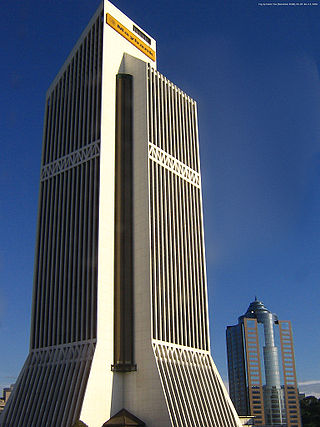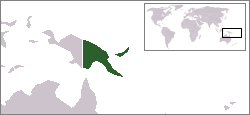Background
Banking came to Papua in 1910 with the establishment of a branch of the Bank of New South Wales in Port Moresby. In 1916, the Australian government-owned Commonwealth Bank, established a branch in Rabaul and agencies in other towns, largely to support the banking needs of the Australian Army and its troops who had taken control of the former German colony of New Guinea. In time, this operation became a full-fledged commercial banking operation.
The Commonwealth Bank established many branches across Papua New Guinea including Port Moresby, Boroko, Rabaul, Lae, Wau, Bulolo, Goroka, Kavieng, Madang, Mount Hagen, Kundiawa, Popondetta and Wewak. On Bougainville there was Kieta, Panguna, Arawa and early on a part-time sub branch at Loloho. The bank maintained those facilities to support trade, local business, government and small savers.
The BNSW suspended its operations in Papua in 1941 after the Japanese Army captured many of the towns in which it had branches and agencies, and bombed Port Moresby. The BNSW resumed banking operations in 1946. The National Bank of Australasia established a branch in Port Moresby in 1957.
In preparation for independence, the Bank of Papua New Guinea was established as the country's central bank in 1973. The incoming Papua New Guinean (PNG) government made known its desire that all banks in PNG be locally incorporated, rather than be branches of a foreign parent. The National Australia Bank (NAB) incorporated its operations in PNG in 1974, which it called Bank South Pacific (BSP). Also in 1974, the Commonwealth Bank withdrew from PNG, transferring its operations to the new government of PNG, [3] which called the bank the "Papua New Guinea Banking Corporation" (PNGBC). Papua New Guinea was granted independence in 1975. The Australia and New Zealand Banking Group established ANZ (PNG) in 1976. In 1990, the ANZ acquired Lloyds' operations in Papua New Guinea.
Then the government encouraged the bank to sell equity to local citizens. BSP conducted public offerings in 1980 and 1981, resulting in local citizens holding 13% of the bank's shares. Later, the government decided to acquire control of BSP. In 1993, National Investment Holdings Limited (NIHL) first acquired NAB's 87% shareholding, and then the 13% of the shares in the hands of the public, giving it 100% ownership of BSP. NIHL later changed its name to BSP. [4]
In 1983, Banque Indosuez established Indosuez Nuigini in PNG, with offices in Port Moresby and Lae. Indosuez Nuigini was 49% owned by Banque Indosuez, 41.5% by Bank of Papua New Guinea, and the remainder by the public. Bank of Hawaii acquired Indosuez Nuigini in 1997 for $5.6 million [5] and renamed it Bank of Hawaii (PNG) Ltd.
In 1994, Maybank set up a subsidiary in PNG, Maybank (PNG) Limited, and opening two branch offices, one in Port Moresby and the other in Lae.
In 1995, the government sold a 25% stake of BSP to Credit Corporation (PNG) and a 22% to Motor Vehicles Insurance (PNG) Trust (now incorporated as Motor Vehicles Insurance Limited). In 2002, PNGBC ran into problems, and BSP acquired the government's 49% stake in PNGBC in return for the government taking a 25% stake in BSP. Between 2002 and 2008 the operations of BSP and PNGBC were merged.
In September 2015, Maybank exited PNG with the sale of Maybank (PNG) Limited and Mayban Property (PNG) Limited to Kina Ventures Ltd. [6]
In 2018, ANZ Bank sold its, retail, commercial and SME banking services to Kina Bank, retaining only its large corporate banking services in the country; [7] In 2021 Kina Securities Ltd (the owner of Kina Bank) also sought to acquire the banking operations of Westpac Bank across the Pacific, however, the acquisition of Westpac PNG was rejected by PNG's Independent Consumer and Competition Commission, resulting in Westpac terminating its sale agreement with Kina for Westpac PNG and Westpac Fiji. [8]
BPNG is engaged in developing policies to promote financial inclusion and is a member of the Alliance for Financial Inclusion, which had been formed in 2008. In 2013, BPNG made a Maya Declaration Commitment [9] to create an enabling environment for building an inclusive financial sector in Papua New Guinea. [10]











